6 Inch Cake Recipe
After extensively testing cake recipes, this is my absolute favorite 6 inch cake base. It’s super fluffy but not too spongy, perfectly balanced vanilla and buttery flavor and simple to make! I’ve adapted this recipe into so many different flavors.
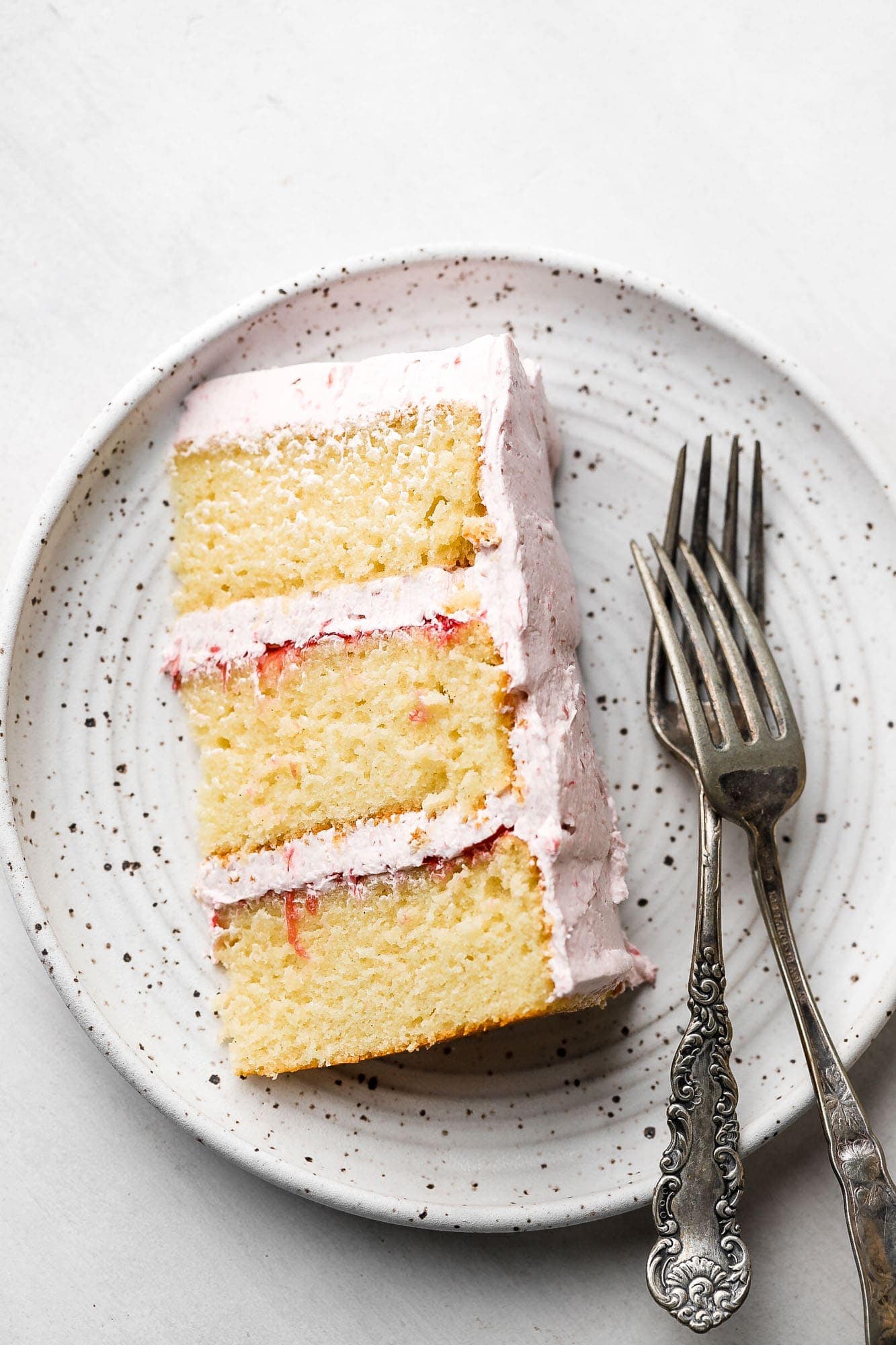
The time has come my friends! If you’ve seen any of my previous cakes, I usually bake 6 inch cakes. My recipes are developed for the casual home baker and most people don’t need to serve more than about 10 people at a time.
I have tested many cake recipes over the last couple years and although some have been phenomenal they just weren’t the one. I wanted the perfect 6 inch cake that I could use on it’s own as vanilla or as a base for other recipes. Now, we know that perfect is different to everyone so let me describe my version of perfect.
What makes this the perfect 6 inch cake recipe?
Texture: I wanted the texture of this cake to be pretty tight. I don’t like when there are large air tunnels throughout in my cake or when the crumb is too crumbly or too bread-y. I wanted a perfect combination of moisture, density, and fluffiness.
For instance, if your cake has too much moisture, it can be kinda gummy and super dense and heavy. We obviously don’t want that. If the cake is super light and airy, it can be a little too spongy or not sturdy enough to stack three layers. Many factors play into making the perfect cake.
Flavor: To me, the perfect cake tastes like a combination of butter, sugar, flour, milk and vanilla. I don’t want my cake to taste super buttery, I don’t want it super sweet and I certainly don’t want it to taste like just cake flour* or buttermilk. Cake flour and buttermilk obviously have their place in cakes but there needs to be a good balance.
*sometimes I find that some brands of cake flour provide a different flavor
Simplicity: No one wants to make the BEST cake out there if the ingredient list is inaccessible or the instructions are obnoxious. Some will still say this one is way too much work but remember, you’re making a cake from scratch… not a box mix.
Adaptability: I wanted my perfect 6 inch cake to be easily adapted to other flavors. I’ve tried many different version of this cake with different flavors and it’s very versatile.
I would not recommend adding anything that will vastly alter the wet to dry ratio but you can certainly do things like substitute ¼-½ cup of flour for graham crackers or cocoa powder, etc.

Ingredients & Substitutions:
- Flour: This recipe was developed specifically to use all-purpose flour since that’s what most people have at home. If you get anything from this post, please let it be this:I HIGHLY recommend a digital scale to measure your ingredients, especially flour. If the cake is dry and you measured with a cup, this is why.
- If you absolutely have to use cups, make sure to fluff up the flour, spoon it into a measuring cup and level it off.
- Fat: I use butter and oil in almost all my cake recipes because I like the flavor from the butter and I like the texture produced by the combination of both fats. I find that oil alone is sometimes too spongy and not quite as pleasant in a plain cake. Whereas using all butter usually results in a cake that’s a bit more stiff.
- Whole Eggs: you simply can’t argue against the flavor and richness that egg yolks bring to the table. I use egg whites when I specifically wanted my cakes to be white (less yellow) but this cake was developed for optimal flavor and texture so whole egg all the way!
- Sugar: I mean do we need to talk about this one? YES WE DO. Sugar is not only there for sweetness. It caramelizes to provide color and flavor, creates tenderness and locks in moisture so I don’t recommend cutting any sugar out. If you want to remove sugar, use a European based buttercream instead of an American.
- Liquid: I was a firm believer in buttermilk before I did all this testing. Now I am a firm believer in sour cream. The difference in texture and flavor was mind blowing from the very first test.
- If you really don’t have access to sour cream you can substitute it for 3/4 cup of plain yogurt or Greek yogurt.
6-Inch Cake, Step-By-Step Photos
My cake is pretty straight forward. It uses the creaming method so it starts with fats and sugar, then the eggs and then alternate adding in dry ingredients and milk. Nothing complicated but are a couple of important steps not to skip.
TIP 1: Ingredients at a cool room temperature will emulsify properly and hold on to more air, creating a fluffier cake texture.
Tip 2: Adding the eggs one at a time and giving them each time to emulsify properly will incorporate more air and also result in a fluffier cake texture.
Vanilla Cake
- Beat together the butter and sugar for 1-2 minutes with the whisk attachment.
- Add the oil and continue beating for another 1-2 minutes.
- Add the eggs, one at a time, beating for at least 30-60 seconds between each addition, until each one is combined. Add the sour cream and vanilla and mix just until they’re incorporated.
- Add in half of the dry ingredients, followed by the milk and then the other half of the dry ingredients. Mix just until the last streak of flour is combined.
- Distribute the batter evenly between three round 6 inch cake pans, about 14 ounces of batter in each one.
- Bake for 30-35 minutes, until the cake is golden brown, the edges released from the pan and/or the cake springs back when you press on it gently. Flip over onto a cooling rack or a tea towel and cool completely before frosting.
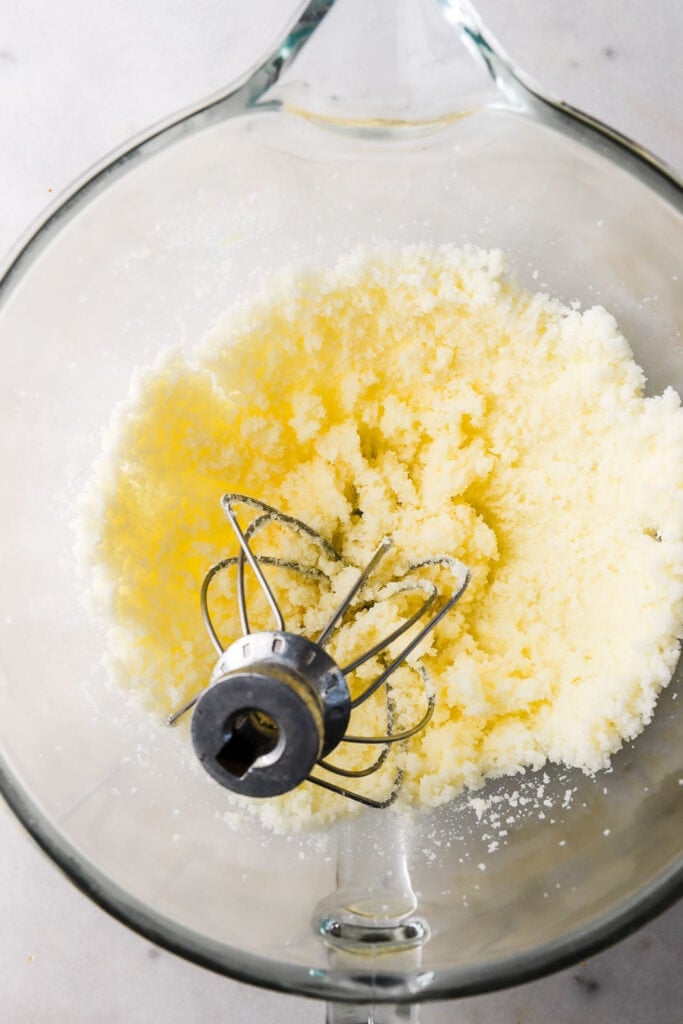
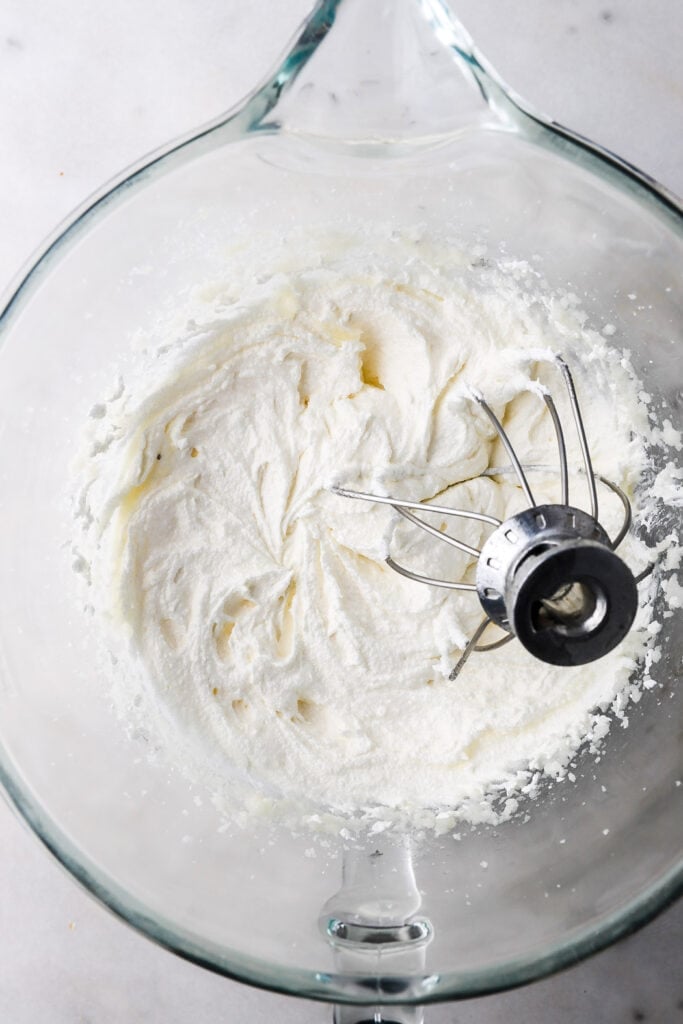
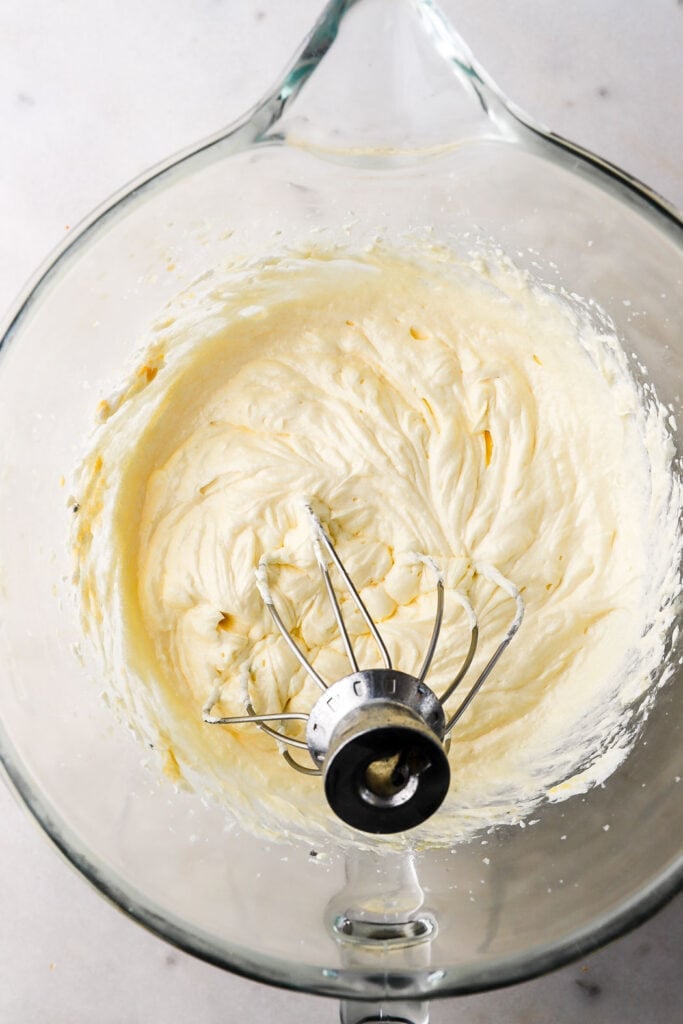

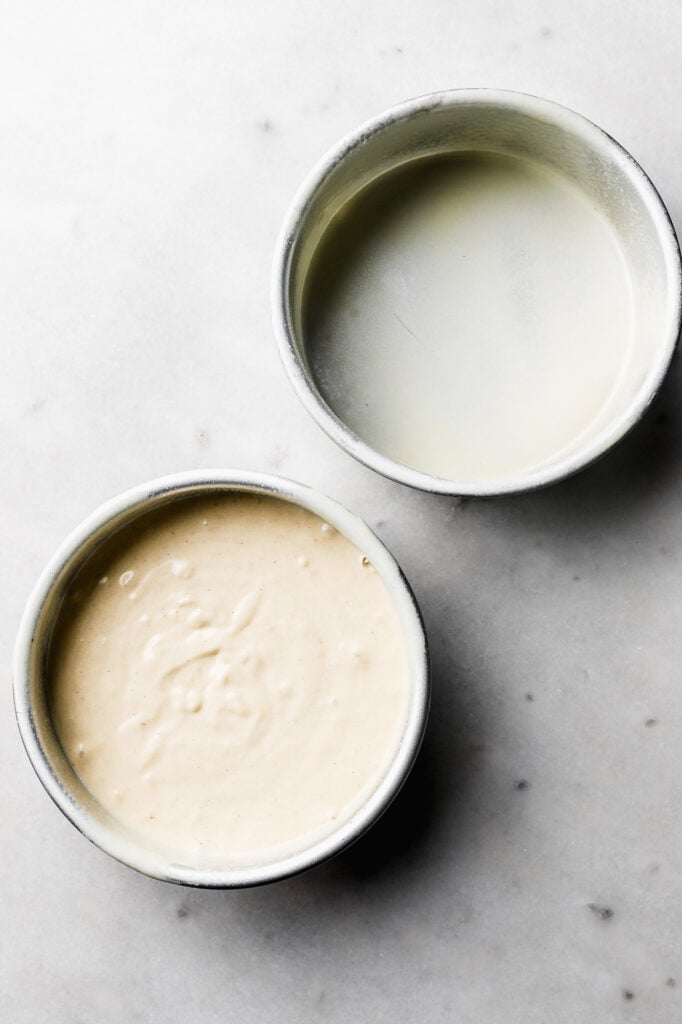
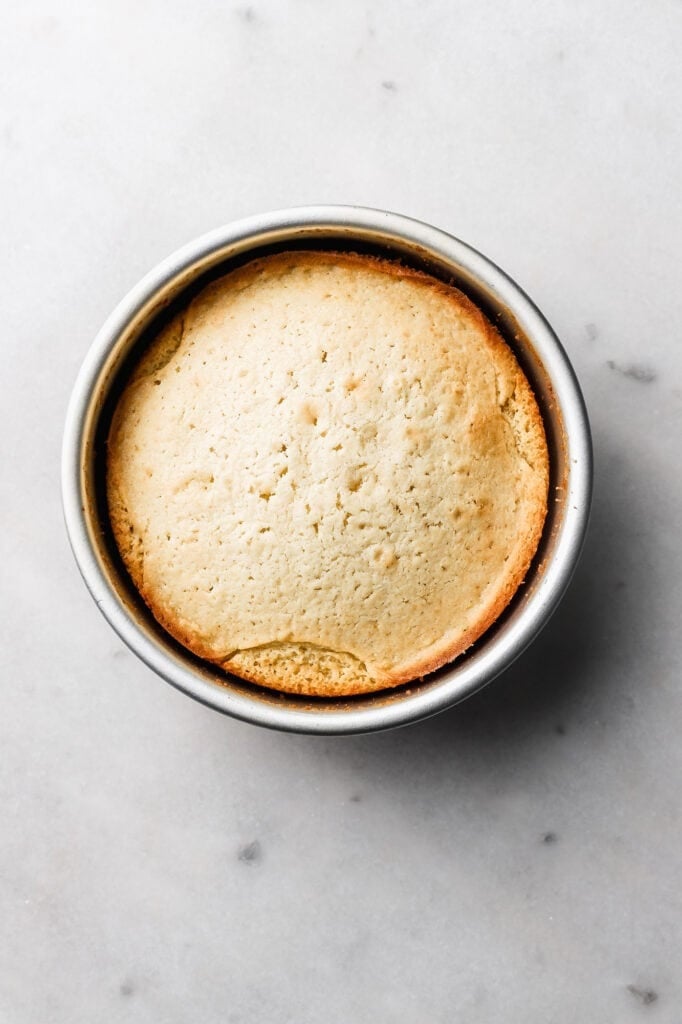
Vanilla Buttercream
- Beat the butter until it lightens in color and get’s fluffy.
- Add the powdered sugar and salt beat for about 5 minutes until it’s completely smooth.
- Add the vanilla and stream in the heavy whipping cream until the frosting is light and fluffy.
- *I added in some raspberry rhubarb jam to in these photos lol
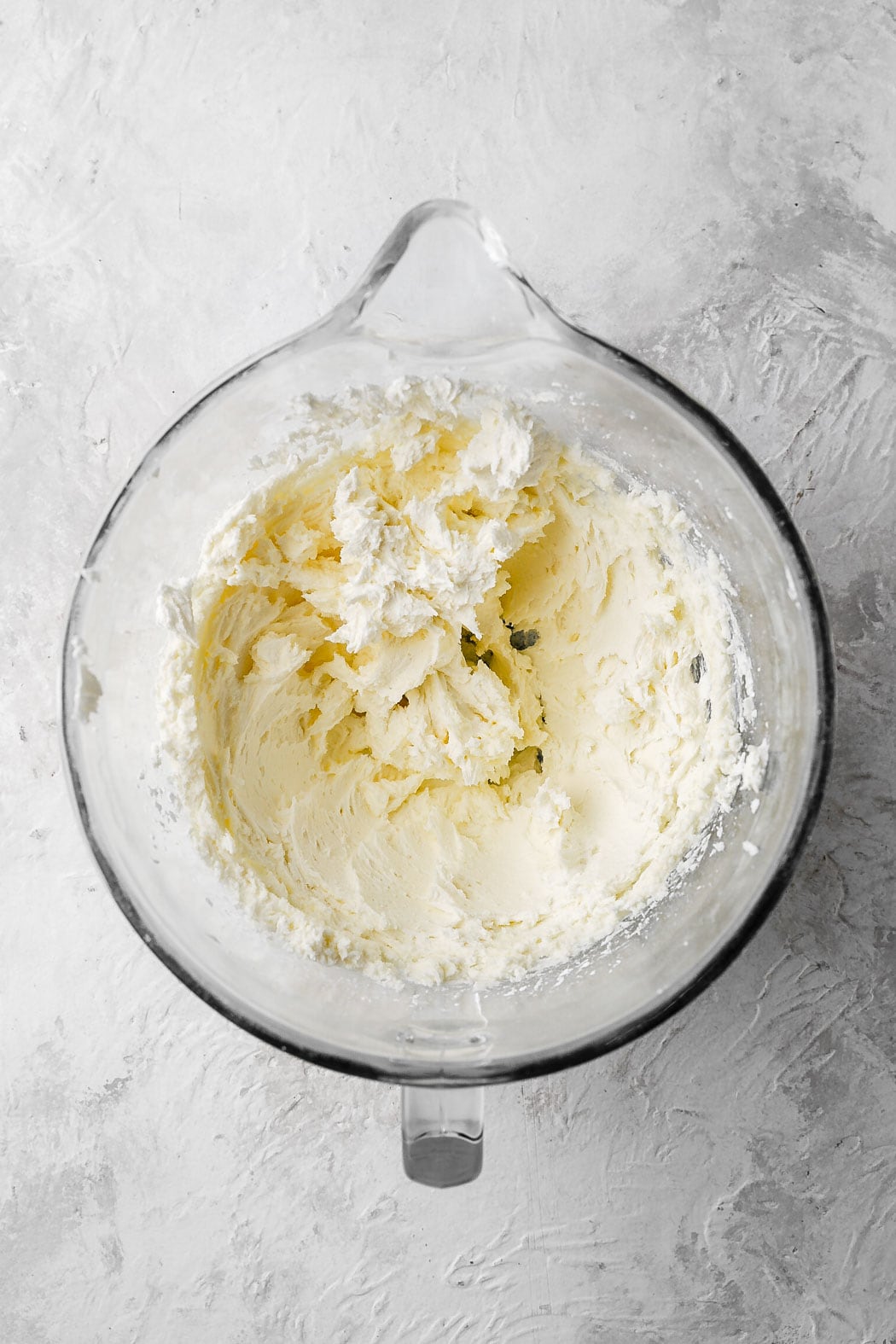
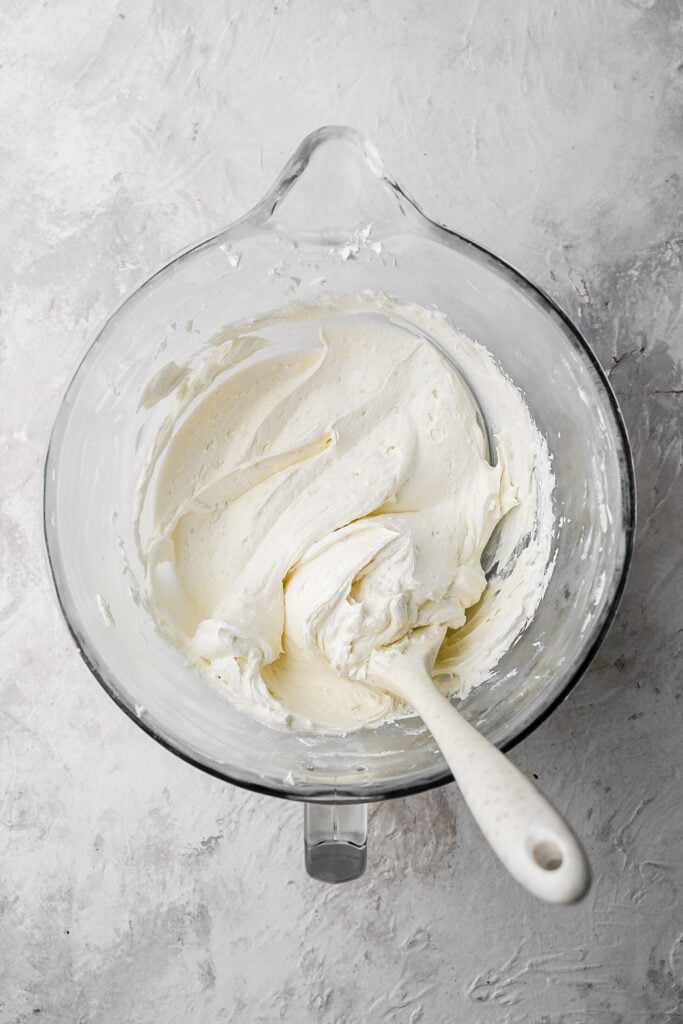
Frequently Asked Questions
I’m sure you see this one a lot but please use room temperature ingredients. It’s not as hard as you think.
¼ cup of butter will soften to room temperature pretty quickly if you cup it up. Put the eggs in warm water for 5 minutes. Microwave the milk for 20 seconds if you need to.
This ensures that the right amount of air is incorporated into your cake and that the batter emulsifies properly. If your batter ever looks split/curdled when you add the eggs, it’s most likely either the temperature of your ingredients or the fat to liquid ratio is off.
Honestly I rarely encounter this problem. I typically just use a baking spray made with flour to grease my cake pans. I feel like that’s not as common as greasing with plain butter or flour but it works for me and it’s so much easier. If you’re really nervous you can use parchment paper to line the pans as well.
This is important because a good cake can become a dry cake in a matter of minutes. Most people insert a toothpick and if it comes out clean, the cake is done baking but that’s unnecessary in my opinion.
If your cake pans are greased properly, the cake should release itself from the edge of the pan once it’s fully baked (you can see that in the photo with the baked cake in the pan).
Another way to know is that as soon as the top of the cake no longer looks wet, gently press on the center of it and if it springs back, it’s done. If your fingerprint stays pressed down then baked for another 1-2 minutes and try again.
Yes! I prefer a three layer round 6 inch cake. You could also make them square or make them thin layers by cutting them in half to make six 6 inch layers. This recipe can also make
Two layer 8 inch cake, bake for about 35 minutes
Two layer 9 inch cake, bake for about 30 minutes
One 9×13 inch cake, bake for about 45 minutes
I also scaled this cake to make a three layer 4 inch cake (or one layer 6 inch) (coming soon), three layer 8 inch cake, and three layer 10 inch cake! So if you love this cake and need a different size, I have those options as well.
I weight my batter for each layer to ensure that they are the same height.
Three 6 inch layers come out to about 15oz per pan.
Two 8 or 9 inch layers come out to about 22oz per pan.
Yes. This 6 inch cake recipe makes 23ish cupcakes, HOWEVER, when I developed the recipe I wanted it to dome as a little as possible since it’s a cake, so they do bake up kind of flat for a cupcake.
I recommend a recipe developed specifically for cupcakes, like my favorite vanilla cupcakes.
You can use dairy free butter, dairy free milk/cream to make any of my cakes. You can also use a dairy free butter for the buttercream.
All my cake recipes work well with a 1:1 gluten-free flour like Bob’s Red Mill and King Arthur Flour.

How to store layer cakes
Storing unfrosted cake layers (making ahead of time)
You can make the cake layers ahead of time. For best results, allow the cake layers to cool almost to room temperature. When they’re still just slightly warm, wrap them in plastic wrap and leave them on the counter overnight for one day.
If you’re making them more than one day in advance, you’ll want to freeze them. Place the plastic wrapped layers in a freezer bag, removing the excess air, and freeze on a flat surface.
You can remove the cakes from the freezer and frost right away or you can remove them a few hours earlier and bring them back to room temperature. If you’re frosting them frozen, make sure work quickly so the frosting doesn’t freeze while you’re working and also let the cake rest so it thaws before serving.
How to store the finished cake
If the cake is fully frosted and unsliced, you can leave it on the counter overnight (as long it doesn’t use fresh fruit, cream cheese frosting, or anything that will go bad) unless it ever feels soft and un-sturdy, then refrigerate it.
If the cake is partially sliced, cover any cut sections with plastic wrap or a cake dome. Place all the cut slices in an airtight container. It can stay at room temperature for a day or refrigerated for up to a week or frozen for months.
How to freeze the cake
If the cake is fully sliced, place the slices in an airtight container or individually wrap each slice in plastic wrap if you want to freeze them and remove one at a time. Place the container in a freezer bag and squeeze out all the excess air. You can store them in the freezer for a several months.
You can also freeze the cake whole. To do this, refrigerate the cake until the frosting is firm, a couple of hours. Then wrap the whole cake in plastic wrap, twice and freeze for up to two months.
Let the cake thaw in the fridge over night. Then remove the plastic wrap and let it thaw on the counter until serving. Keep in mind, the cake is never as good as fresh but frozen is better than refrigerated.
This cake in other sizes
I scaled this round 6 inch cake into other commonly used sizes.

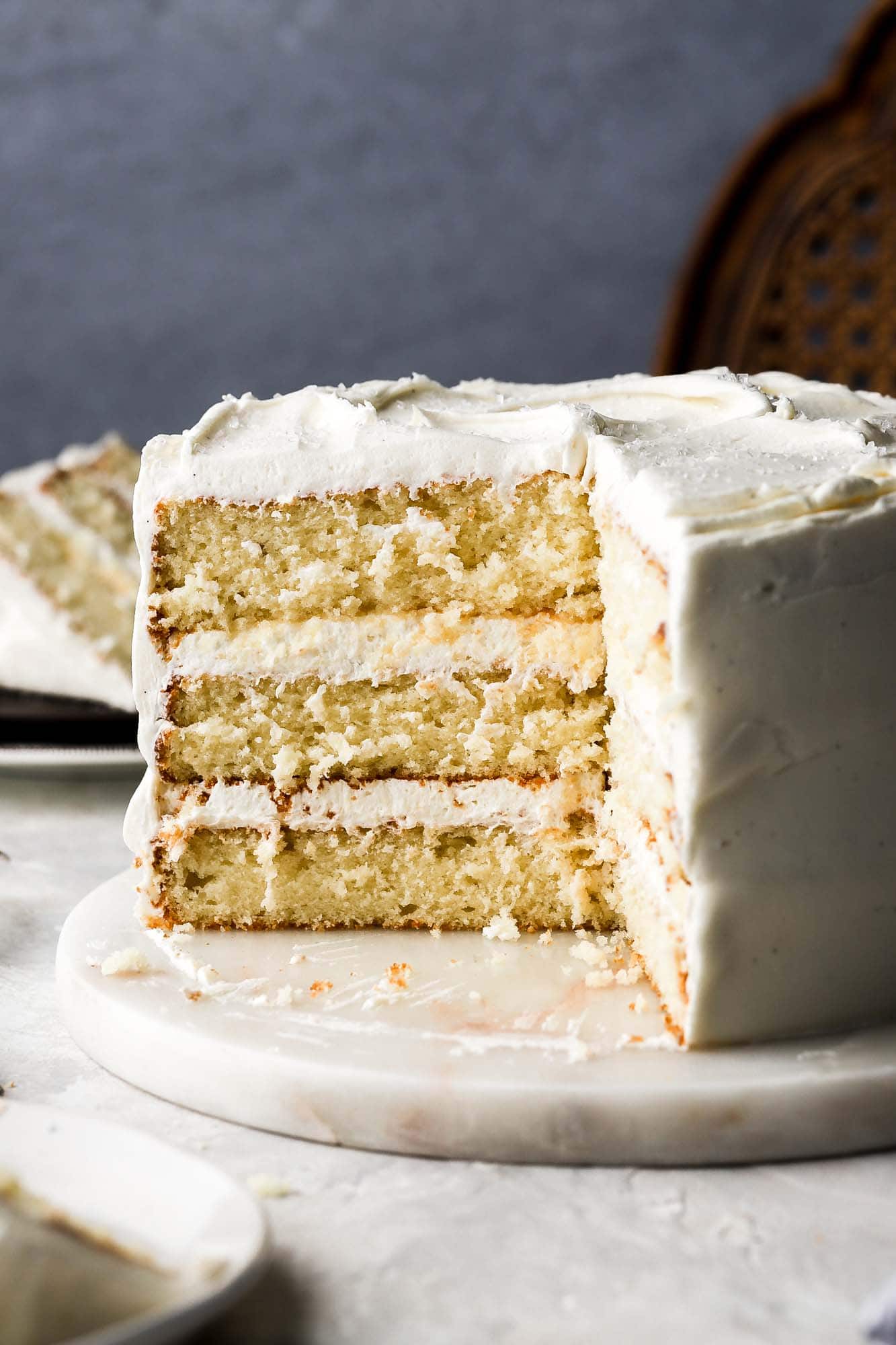
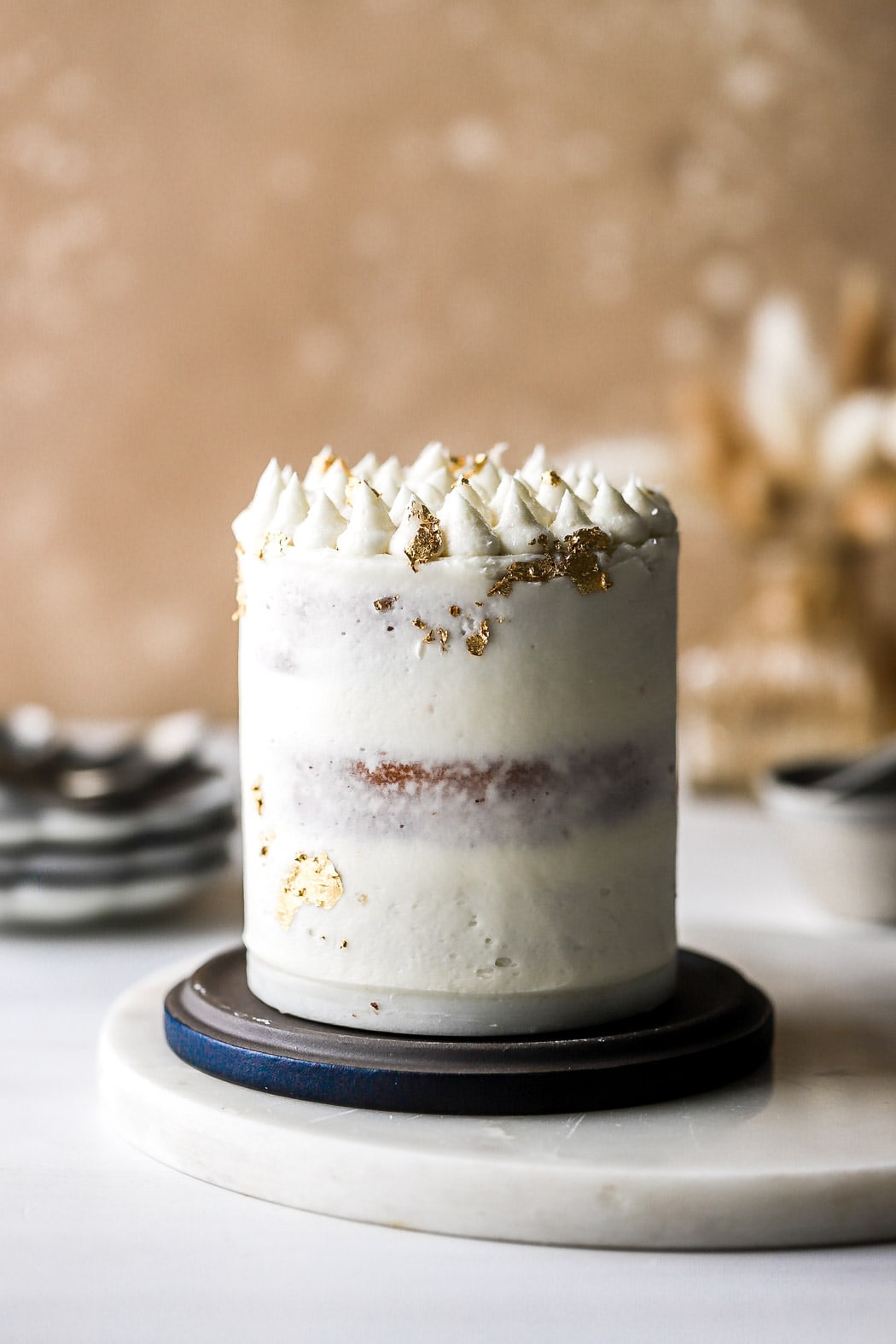
Recipes that I’ve adapted this cake into:
There’re so many recipes on my website that were adapted from this cake but here are a few of my favorites!

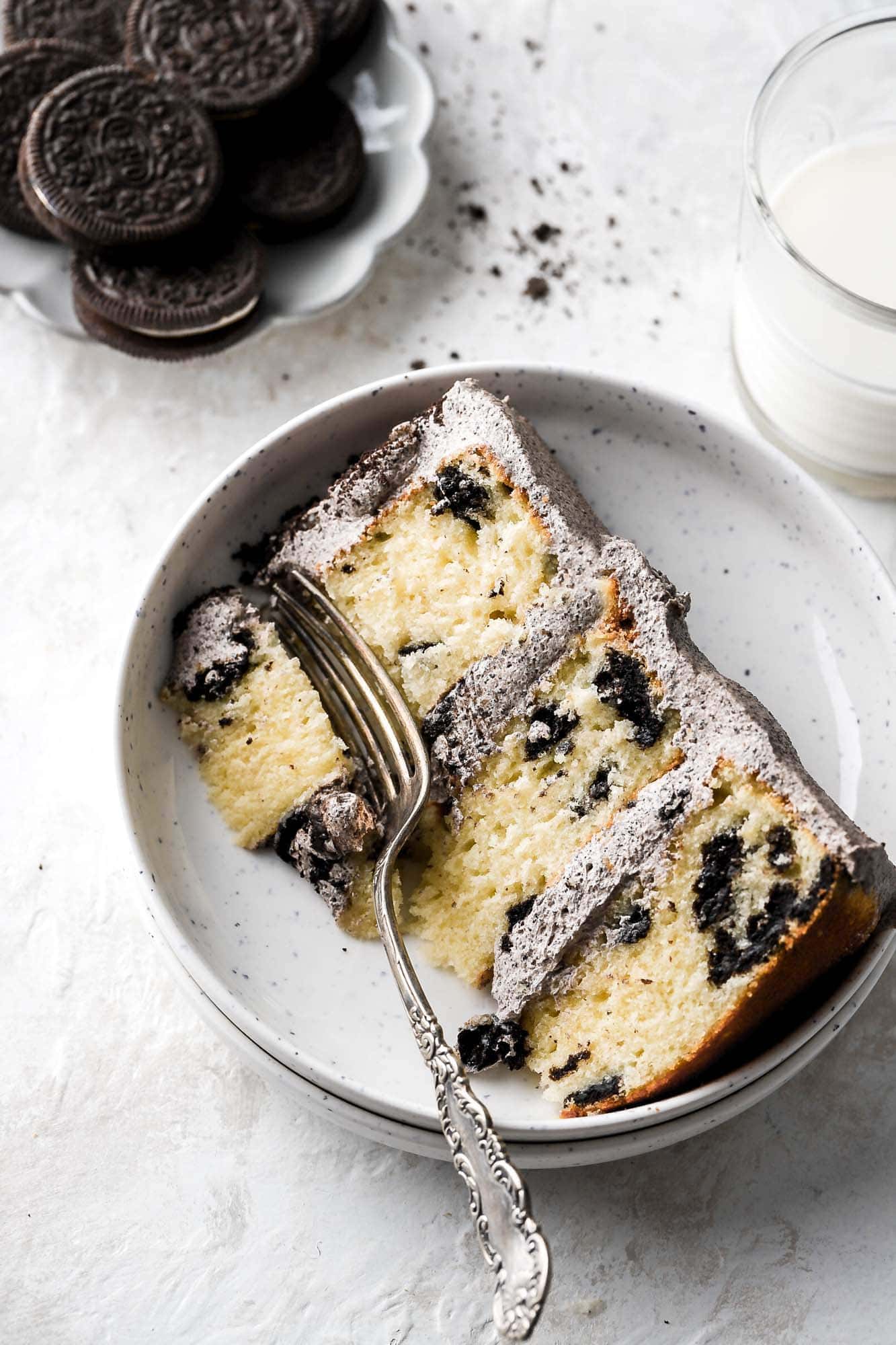
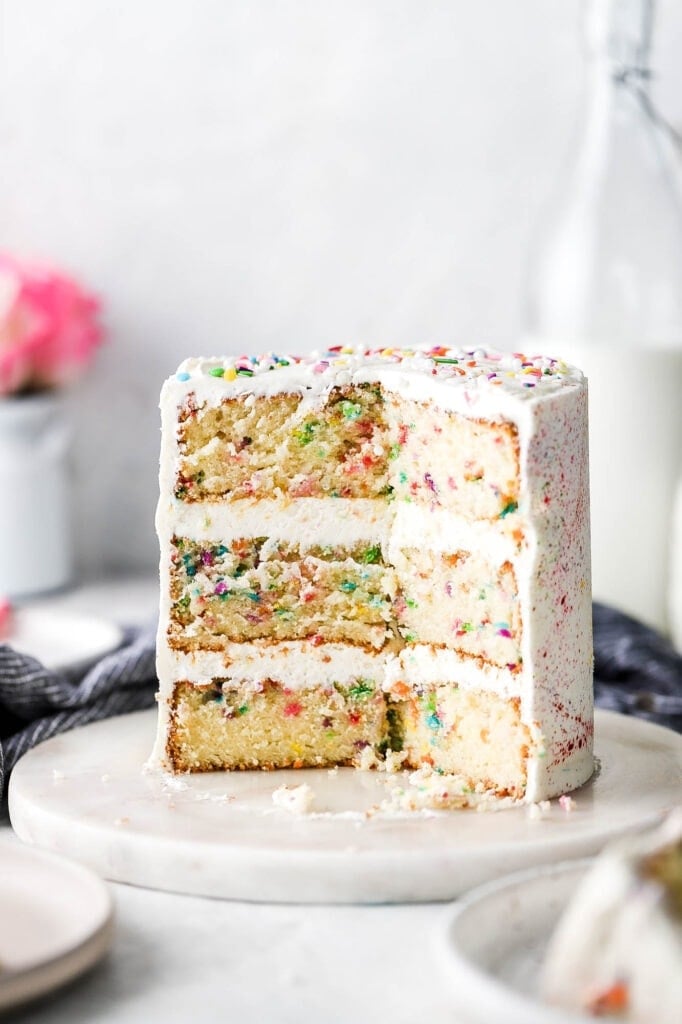
I’m very aware that this will not be everyone else’s favorite base cake recipe. I always welcome constructive criticism!
I’d be happy to answer any questions down below. If you make this cake, please consider leaving a star rating or a review below.
As always, happy baking and have a blessed day!
Love, B
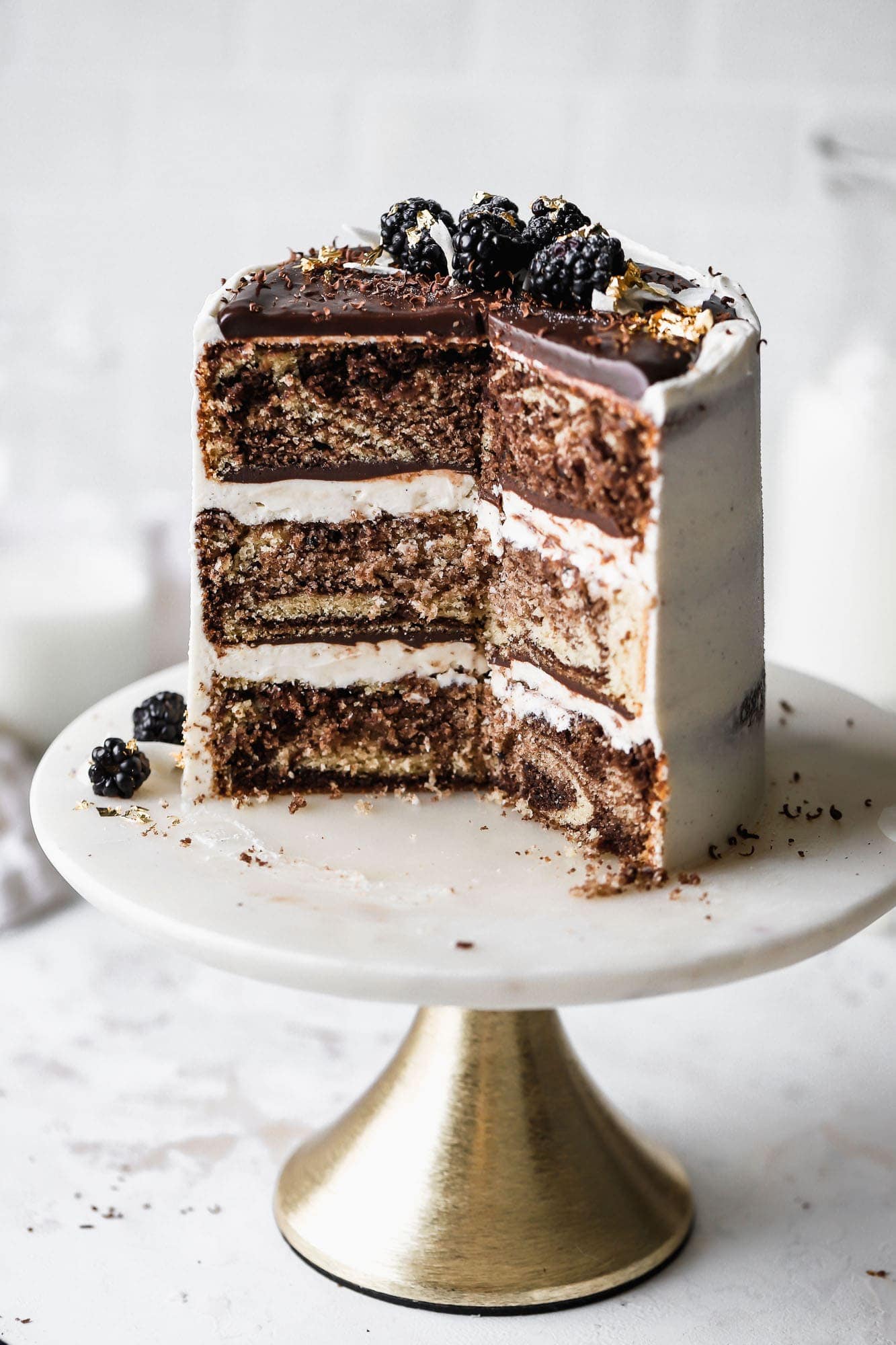
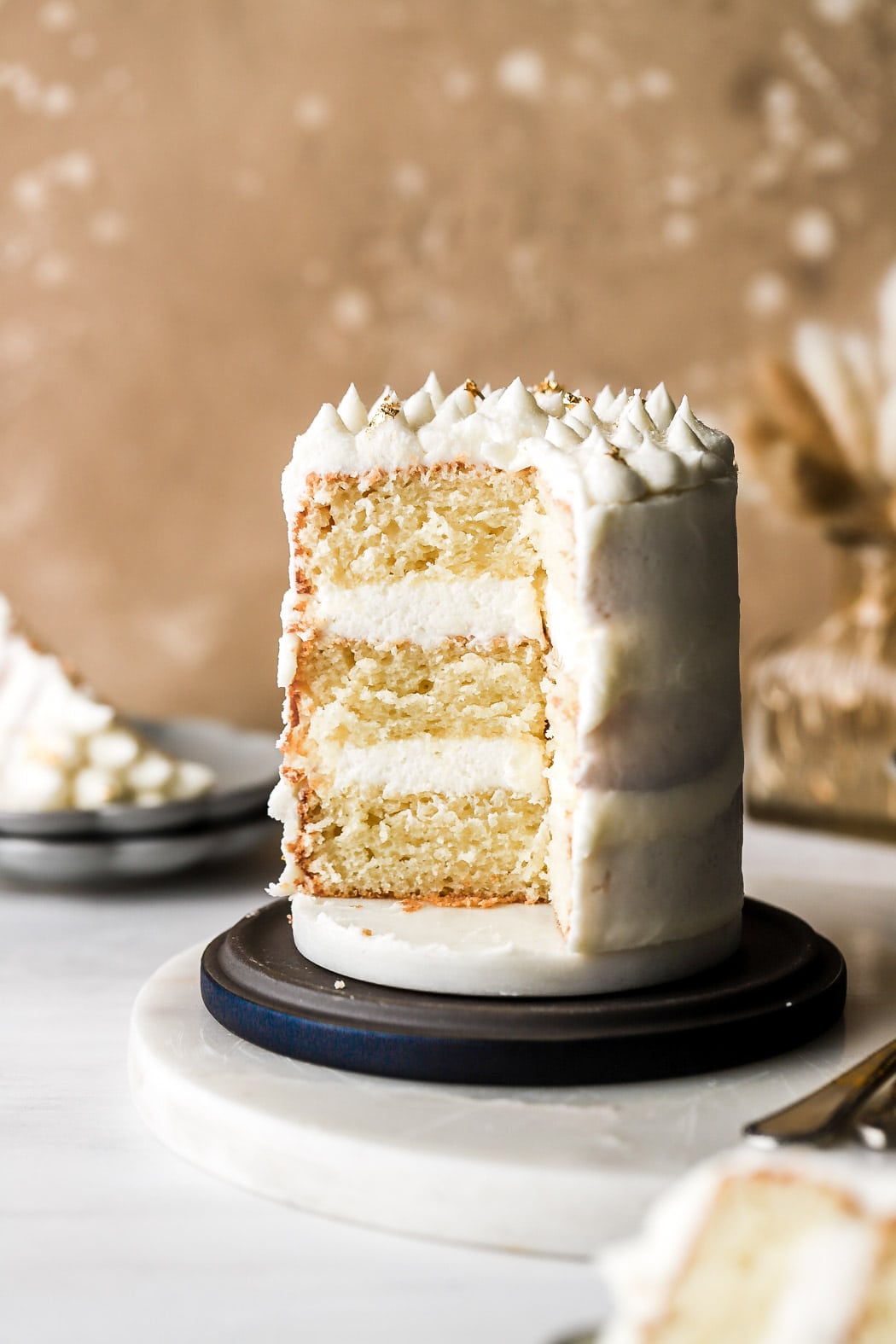
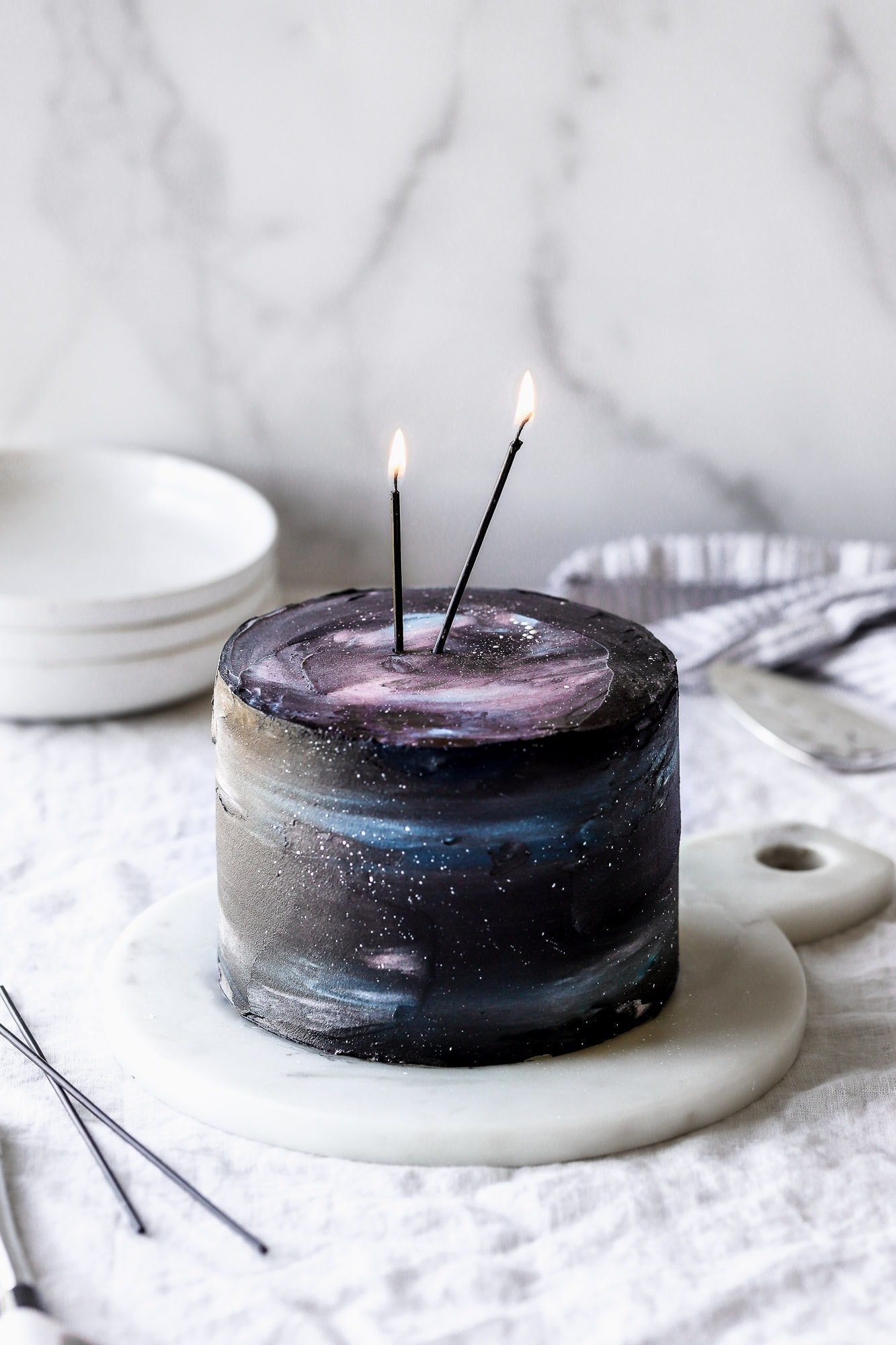

How can I add the strawberry reduction you use for your strawberry cupcakes? I’ve made the strawberry cupcake recipe and it was great, but needing to now make in a 6in smash cake.
Hi Sidney, I would just swap out the milk for the strawberry reduction. I haven’t tried it on this cake but that’s what I did when I turned my vanilla cupcakes to strawberry cupcakes so I don’t see why it wouldn’t work!
Hello:
Quick question: how can I convert this recipe with AP flour? Two of my grandchildren have allergies and at the moment I am restricted to King Arthur AP flour. Thank you! Love all your recipes!!
Hi Pam, thank you so much, I’m so glad you like them! However, I don’t quite understand your question, I use AP flour in the recipe so any brand works fine 🙂
Hello again:
So sorry, I think I forgot to include my question above. lol.. It’s been a busy day. I made your 6 inch vanilla cake and everyone loved it!! I also wanted to make cupcakes with this recipe. In your post, you recommend your Cupcake recipe which has Cake flour as a main ingredient. I am unable to use Cake flour because 2 of my grandchildren have allergies. I cannot find a brand of Cake flour that is safe. Every brand that I purchase must be made in a peanut, tree nut and sesame free facility so I am restricted. Thank you for any suggestions. I appreciate it!
Ahh I see, yes you can use AP flour for the cupcakes too, they are just slightly less tender. You could also sub in 1-2 tbsp of the flour for cornstarch to help with that
Hello:
I made this cake for my grandson’s birthday. Quick question: Did you had fruit to the frosting? It looks like it is incorporated in the frosting picture. Thanks
Hi Pam, this post initially just had the cake part and then I decided to add in some shots of the inside texture but that cake had raspberry rhubarb jam in the frosting lol, I have a separate post for it but the cake is the same! I will have to photograph and plain version to update the photos!
What type of oil did you use?
canola but any neutral oil works
Extremely moist and light, made in a 9×9 pan, minus 1/2 C batter,baked slightly longer. Turned out perfect for a quick bday request.
Hi there, I was just wondering if I need to adjust the recipe or cook times/temp if doing two 8 inch cakes instead of three 6 inch pans? Thank you!
I am making a small wedding cake for a friend. I made two 10” instead of three and two 6” instead of three. They came out absolutely perfect! They smell delicious and if the batter is any hint of what they will taste like, then….amazing! Thank you for the recipe, very easy too!
I plan to make this recipe for my sons first birthday next Saturday. Do you know approximately how many standard size cupcakes this recipe makes? Thanks!
23! But I recommend making a cupcake recipe instead 🙂
https://baranbakery.com/vanilla-cupcakes-with-vanilla-buttercream/
Hi,
Recipe looks amazing and I want to try.
Please what could I substitute instead of sour cream?
Thanks 🙂
Yogurt
Hello, I tried the 6 inch cake recipe and it was absolutely delicious. I’m making it for my son’s 1st bday smash cake but I also want to make a larger 9x13in cake for the rest of the guests . Do you think a batch of this same recipe would cook properly in a 9×13 rectangular cake pan?
Yes one batch of this will make a 9×13” cake. Bake for approximately 40 minutes!
Hi I have just come across your recipe and can’t wait to try it. Does it need to be kept in the fridge because of the sour cream?
Hi, I’m keen to try this recipe. Is the sponge stable enough to be used for a 2 tier cake?
Yes
I want to make a smash cake for my daughter’s first birthday. She is allergic to eggs. I have found I can substitute 1 tsp baking soda + 1 tbsp vinegar for the first egg, and 1/4 cup plain yogurt for every egg after the first in almost any cake recipe. I see that this cake has sour cream and baking powder. Is there any reason why my method for replacing eggs wouldn’t work with these ingredients? Should I still put the sour cream since I’m already using yogurt, or maybe I could use sour cream instead of the yogurt? I didn’t know if the yogurt would be good with the sour cream. I understand that by altering the recipe this way it won’t taste exactly the same. I just want to make sure it will still cook okay if you have any idea. Thank you!
Hi Ashley, I haven’t really worked with egg replacements but if that worked in the past I don’t see why it wouldn’t work now. I use sour cream and yogurt pretty interchangeably so I think using just one or the other, or both would be perfectly fine.